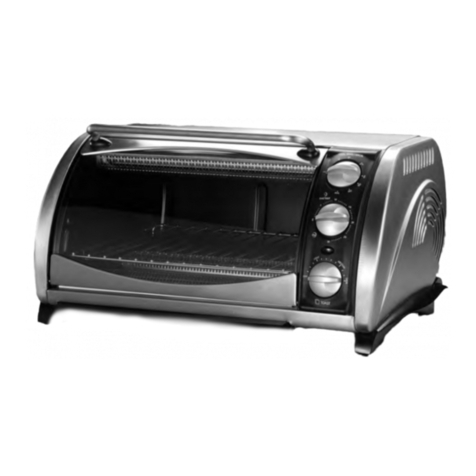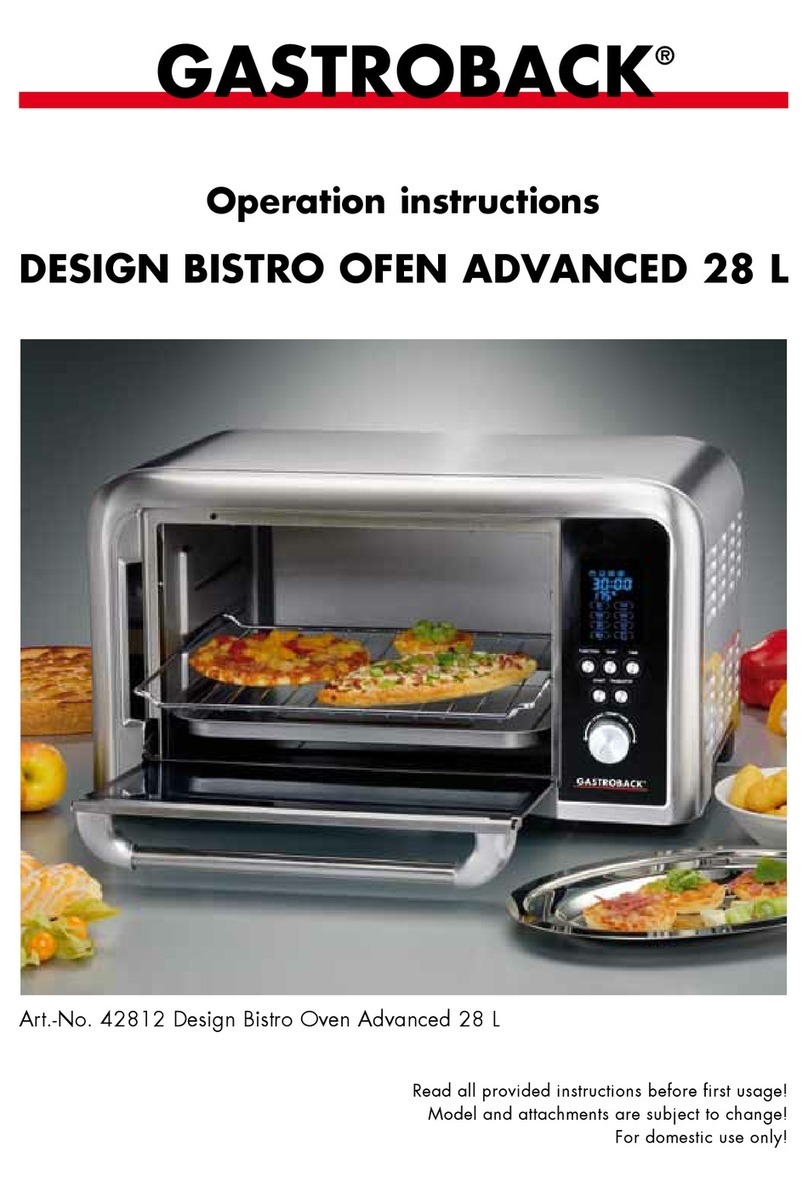
EN EN
6 7
unplug the appliance. If any malfunction occurs, get in contact with an
authorized service centre for examination and/or repair.
• Do not use spare parts and accessories that are not recommended by
the manufacturer. Unsuited or damaged parts could break, melt, and/
or catch fire during operation, thus causing risk of injuries and damage
due to high temperature, fire, harmful substances, and electric shock.
• This appliance may be used or handled by persons with reduced physi-
cal, sensory or mental capabilities, or lack of experience and knowledge
(including children from 8 years on), if they have been given supervisi-
on and/or instruction concerning the use of the appliance by a person
responsible for their safety, and if they understand and consider the invol-
ved hazards. Even cleaning may not be performed by children without
supervision. Children must always be supervised to ensure that they
do not play with the appliance or any part of the appliance or the
packaging. Always keep the appliance where it is dry, frost-free, and
clean, and where children younger than 8 years cannot reach it.
• Operate the appliance on a well accessible, stable, level, clean, dry,
and suitable large table or counter that is resistant against heat, fat,
and water. The rear of the appliance shall be placed against a heat-
resistant wall. A protrusion at the rear of the housing ensures a mini-
mum of free space. For operation, leave at least 20cm of free space
on each side, to ensure sufficient ventilation and avoid damage due
to heat and hot steam. The appliance is not suitable for built-in ope-
ration in a cabinet or fitted kitchen.
• Do not place any clothes or tissue or other foreign objects under or
on the appliance during operation, to avoid risk of fire, electric shock
and overheating. The ventilation slits in the sides and rear of the hou-
sing may not be blocked. For operation, do not place the appliance
over a power cord or on the edge of the table or counter.
• The of the appliance is heated electrically. Do not place the appliance
or any part of it on or near hot surfaces (heater, gas burner, grill, range,
or oven). Do not place any hard and/or heavy objects on the appliance.
• Always ensure that the crumb tray is inserted correctly during operation.
• Do not use violence. Special care is necessary during operation and
IMPORTANT SAFEGUARDS
Carefully read all instructions given in this booklet before ope-
rating this appliance. These instructions are an essential part
of the appliance. Do not pass the appliance without this booklet to third
parties. Save all instructions for further reference.
Do not attempt to use or treat this appliance or any parts or accessories
in any other way or for any other than the intended use, described in this
booklet. Unintended use and especially misuse may cause severe injuries
and damage due to electric shock, moving parts, fire, and heat. Do not
use the parts of the appliance with any other device. There is no warranty
claim of the purchaser or liability to recourse of the manufacturer, if any
damage and injuries are caused by unintended use or improper treatment.
Do not attempt to repair the appliance or any parts of it on your own
(e.g. power cord). Please contact your vendor. If there are any uncertain-
ties or additional information is required, please feel free to contact the
GASTROBACK®Customer Care Center (phone: +49 (0)4165/22 25-0
GENERAL SAFETY INSTRUCTIONS
• Do not leave the appliance unattended, when it is connected to the
power supply! Always unplug the appliance for moving or cleaning
it and when it is not in use.
• This appliance is for household use only and NOT intended for use
in moving vehicles. Do not operate or store the appliance in humid or
wet areas or outdoors.
• Check the entire appliance regularly for proper operation (e.g. check
for distortion, excessively frayed or melted parts, cracks, leaks, corroded
pins of the power plug, over-heating). Do not operate the appliance,
when the appliance or any part of it is likely to be damaged, to avoid
risk of fire, electric shock, or any injuries to persons and/or damage.
The appliance or its parts are likely to be damaged, if the appliance has
been subject to inadmissible strain (e.g. moisture in the housing, over-
heating, mechanical or electric shock), or if there is any damage, or if
the appliance is not working properly. In case of any severe problem
during operation (e.g. smoke escaping from burnt food), immediately































